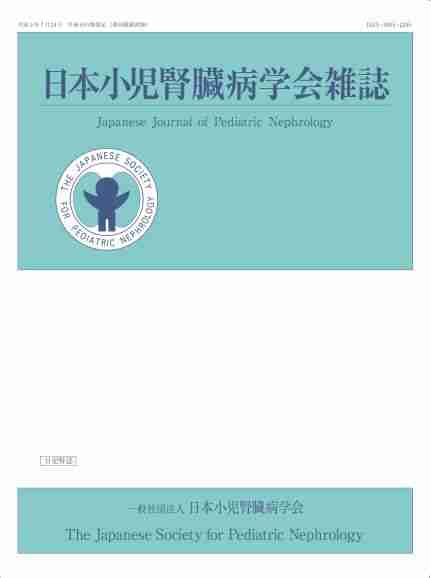Volume 33, Issue 1
Displaying 1-15 of 15 articles from this issue
- |<
- <
- 1
- >
- >|
Opinion
-
2020Volume 33Issue 1 Pages 1-8
Published: 2020
Released on J-STAGE: April 15, 2020
Advance online publication: March 11, 2020Download PDF (697K)
Review
-
2020Volume 33Issue 1 Pages 9-16
Published: 2020
Released on J-STAGE: April 15, 2020
Advance online publication: March 16, 2020Download PDF (1487K)
Original Articles
-
2020Volume 33Issue 1 Pages 17-21
Published: 2020
Released on J-STAGE: April 15, 2020
Advance online publication: March 02, 2020Download PDF (343K) -
2020Volume 33Issue 1 Pages 23-28
Published: 2020
Released on J-STAGE: April 15, 2020
Advance online publication: March 06, 2020Download PDF (426K)
Case Reports
-
2020Volume 33Issue 1 Pages 29-35
Published: 2020
Released on J-STAGE: April 15, 2020
Advance online publication: February 20, 2020Download PDF (698K) -
2020Volume 33Issue 1 Pages 37-42
Published: 2020
Released on J-STAGE: April 15, 2020
Advance online publication: March 02, 2020Download PDF (2025K) -
2020Volume 33Issue 1 Pages 43-50
Published: 2020
Released on J-STAGE: April 15, 2020
Advance online publication: March 13, 2020Download PDF (1884K) -
2020Volume 33Issue 1 Pages 51-57
Published: 2020
Released on J-STAGE: April 15, 2020
Advance online publication: March 06, 2020Download PDF (2327K)
-
2020Volume 33Issue 1 Pages 59-63
Published: 2020
Released on J-STAGE: April 15, 2020
Download PDF (470K) -
2020Volume 33Issue 1 Pages 65-72
Published: 2020
Released on J-STAGE: April 15, 2020
Download PDF (560K) -
2020Volume 33Issue 1 Pages 73-82
Published: 2020
Released on J-STAGE: April 15, 2020
Download PDF (660K) -
2020Volume 33Issue 1 Pages 83-91
Published: 2020
Released on J-STAGE: April 15, 2020
Download PDF (614K) -
2020Volume 33Issue 1 Pages 93-99
Published: 2020
Released on J-STAGE: April 15, 2020
Download PDF (561K) -
2020Volume 33Issue 1 Pages 101-106
Published: 2020
Released on J-STAGE: April 15, 2020
Download PDF (477K) -
2020Volume 33Issue 1 Pages 107-110
Published: 2020
Released on J-STAGE: April 15, 2020
Download PDF (350K)
- |<
- <
- 1
- >
- >|
